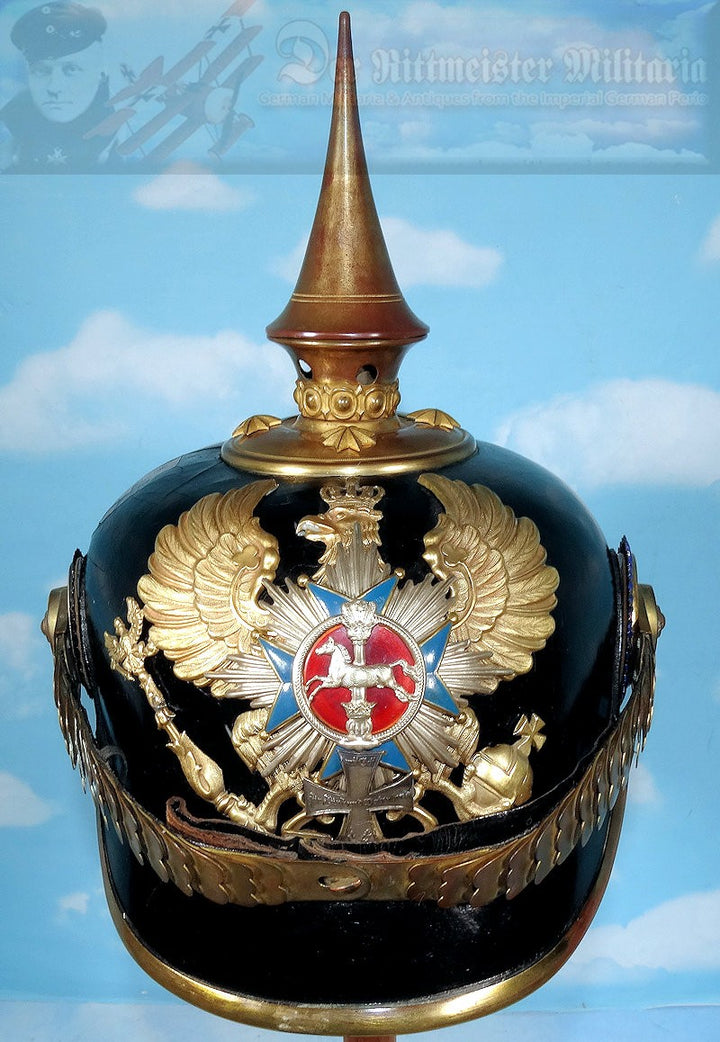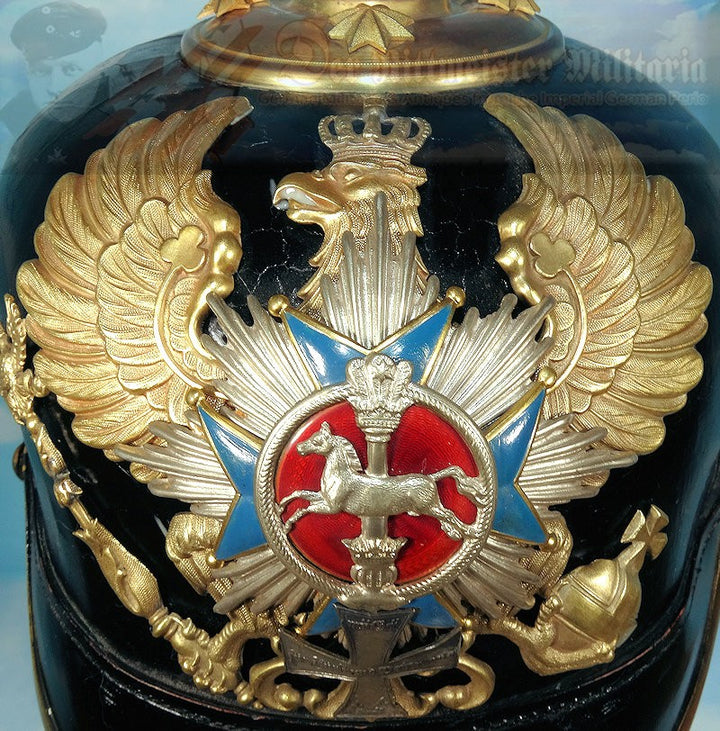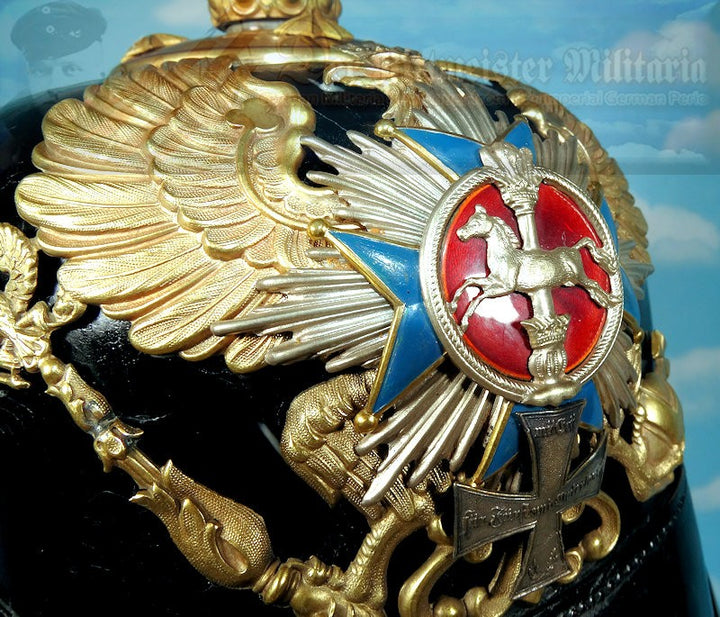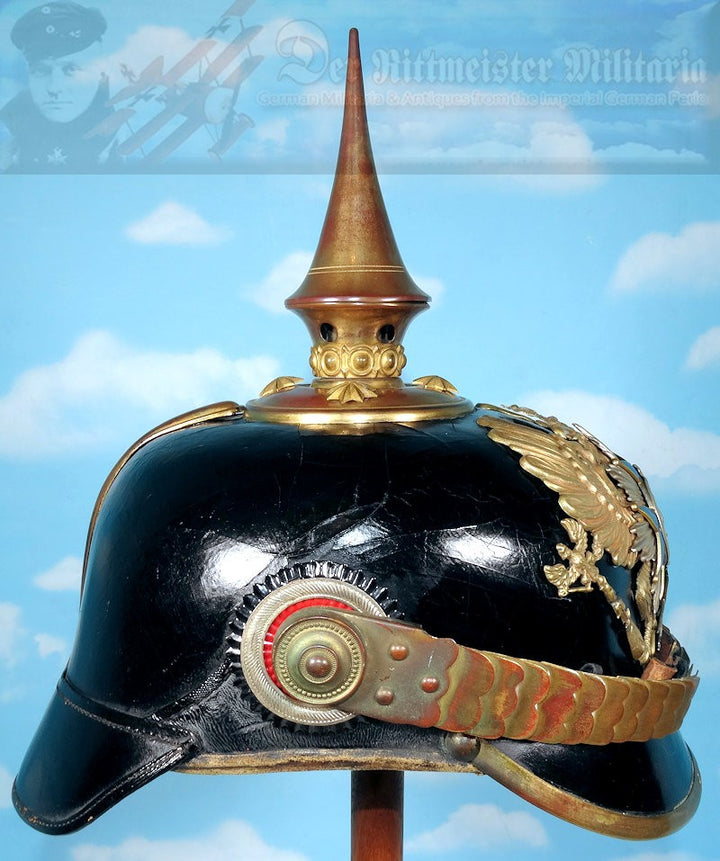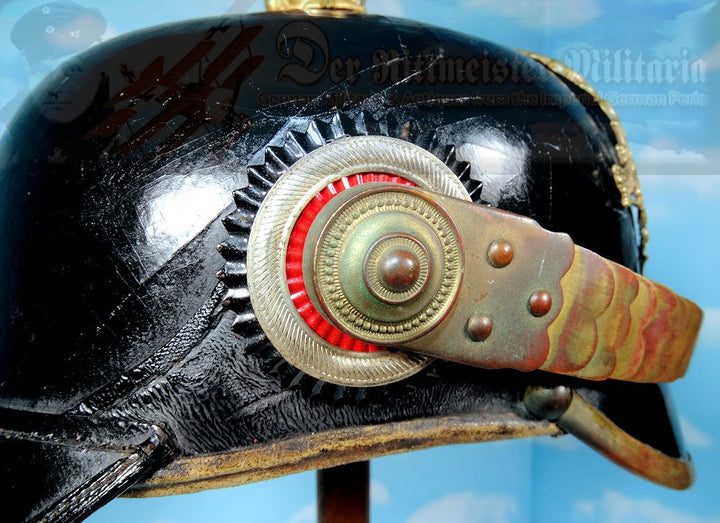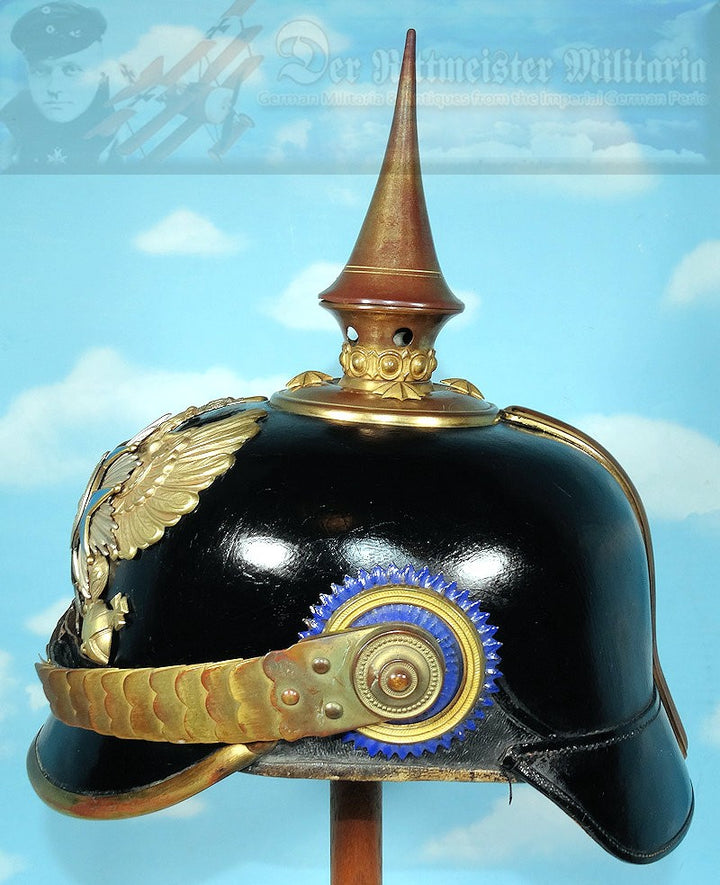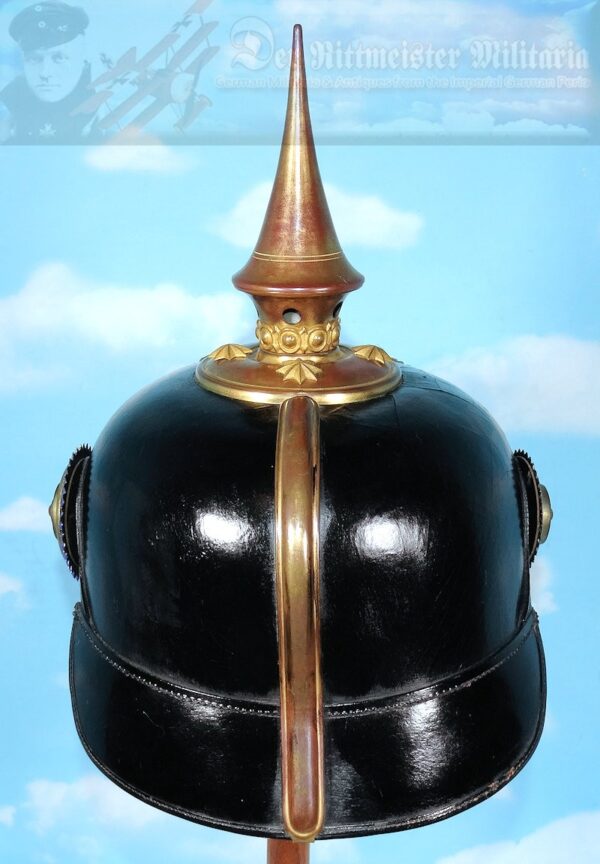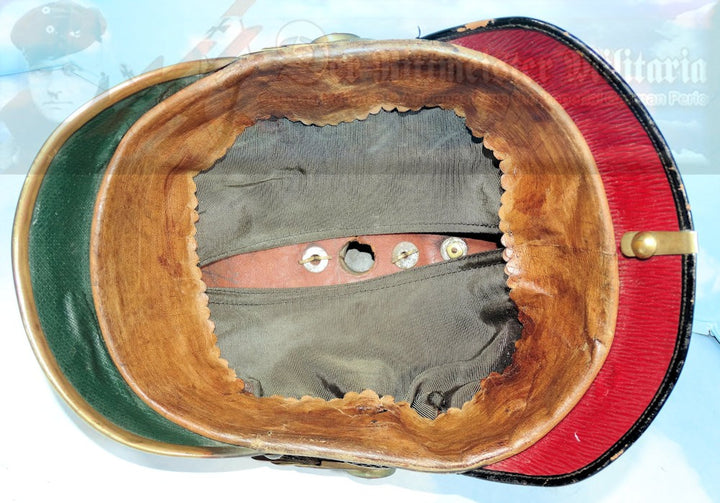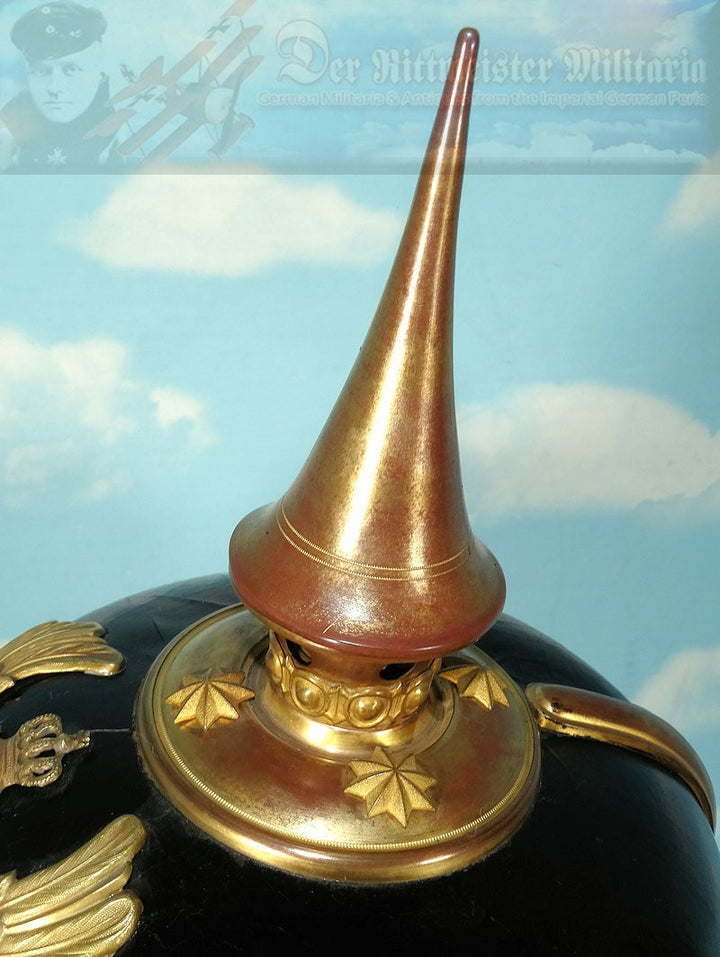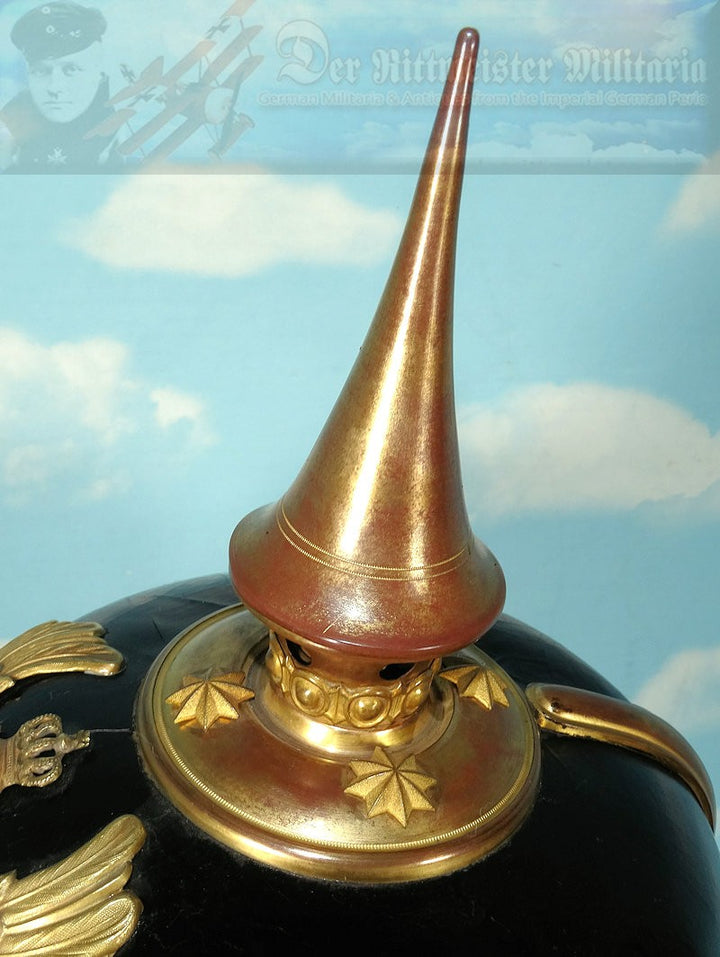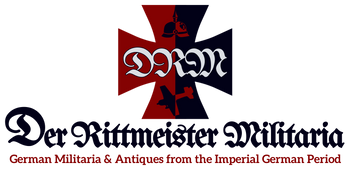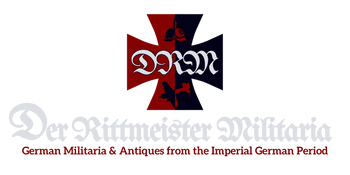Braunschweig Pickelhaube / Spiked Helmet for Landwehr Officer in Infantry Rgt 92
- Regular price
- $8,495.00
- Sale price
- $8,495.00
- Regular price
SKU: 04-758 XKGJT
Definite rarity, an Infanterie-Regiment Nr 92 Landwehr Officer’s Pickelhaube. (SEE - Casques A Pointe by Jean Louis Larcade Volume 1 page 72)
I know you are more used to seeing Infanterie-Regiment Nr 92 helmets displaying the Totenkopf (Death’s Head), but another version was used earlier by the regiment’s Bataillon Nrs I and II. After 1912, the entire regiment switched to the wappen sporting the Totenkopf. The earlier examples are seen far less often. Although many collectors prefer the Totenkopf wappen, this beautiful helmet deserves equal consideration, primarily because the wappen’s center features enamel on it.
[PLEASE NOTE: the presence of enamel on wappens is rather unusual (IF you discount Prussia’s Garde-Regiments). Only SIX Imperial German Army regiments incorporated some form of enamel into their wappens. They were 1). Braunschweig’s Infanterie-Regiment Nr 92, 2). Baden’s Leib-Grenadier-Regiment Nr 109, 3). Hesse-Darmstadt’s Leibgarde-Infanterie-Regiment Nr 115, 4). Prussia’s Dragoner-Regiment Nr 2, 5). Württemberg’s Dragoner-Regiment Nr 26, and 6). Prussia/Hannover’s Ulanen-Regiment Nr 13. The latter’s tschapka featured a Prussian Garde Star along with various Hanoverian bandeaux above a Prussian Eagle, thus resembling a Prussian Garde-Regiment wappen with attached bandeaux].
Braunschweig’s Infanterie-Regiment Nr 92 had a long and proud history. It was raised in 1809 and fought extensively in Spain under the command of Field Marshal Wellington during the Napoleonic Wars, suffering substantial casualties. It was garrisoned in Braunschweig’s capital city and assigned to the X. Armeekorps along with other Hanoverian regiments. [The Duchy of Braunschweig was a vassal state of the Kingdom of Hannover. Both were absorbed into Prussia following the Austro-Prussian War, in which they had backed Austria’s losing side. Prussian Prince Albert administered Braunschweig until his death in 1906. Ultimately, Ernst-August (1887-1953) assumed the throne as Duke. He married Kaiser Wilhelm II’s only daughter, Viktoria Luise (1892-1980). This resulted in greater freedoms being granted to Braunschweig].
The end result is that this is a rare spiked helmet. It sports a very fine leather body that is relatively problem-free, exhibiting only the barest hint of a blemish or two. Its brass wappen is similar to a Prussian Infanterie wappen. As it is for an officer, it features an open (voided) crown. A silver sunburst in the wappen’s center contains an eight-pointed, blue, enamel cross emblazoned with a brass, running horse’s profile. Crowns appear at the cross’s 12 o’clock and 6 o’clock points. The reserve officer’s cross appears directly below the running horse emblem. [PLEASE NOTE: an elite regiment like this one contained far fewer reserve than regular army officers]. All of the helmet’s other furniture is brass-colored, including the (correct) flat chin scales, the base, the pearl ring, the trim, the officers’ stars, and the tall, very elegant spike. The helmet’s final exterior details include the correct officer’s State and Reich’s kokarden. The rosettes that attach its chin scales use the later style M-91 side posts. [Personally, I think it was a matter of the original owner’s sense of style, and an adjustment that he made during the period. As their pickelhauben were privately-purchased, officers had a great deal of flexibility with their headdress].
The helmet’s interior reveals a fine leather sweatband that is complete, although obviously used. A couple of wear spots show on the sweatband’s leather. A fine, ribbed, silk liner is attached to the sweatband. It is an unusual dark-green in color and in excellent condition. Furthermore, ALL of the original hardware is in place, with NO double holes where the wappen is attached. It is a complete AND original pickelhaube in top condition. This spiked helmet would serve as an important part of your collection, especially if you have an Infanterie-Regiment Nr 92 helmet with the Totenkopf wappen.
This is a consignment item.
At Der Rittmeister Militaria, we strive to bring you the best in spiked helmets, or pickelhauben (plural for pickelhaube), one of Imperial German Militaria’s most interesting areas for collecting. While ORIGINALITY and AUTHENTICITY are of prime importance, please do not forget Der Rittmeister’s commitment to CONDITION and QUALITY. In this regard, we take special pride in offering you spiked helmets whose condition is at least well above average, if not excellent. I examine hundreds of pickelhauben to find the very few that fulfill all four criteria mentioned above. Upon receiving their new treasure, collectors who have purchased one of our pickelhauben often exclaim that their helmet looks even better than the photos we had displayed on our website. [We do use a high-quality digital camera to photograph our items and upgrade cameras every two years, but enough with the Der Rittmeister Militaria commercial]! Just remember, dear friends, Der Rittmeister’s Four Critical Criteria for collecting pickelhauben: ORIGINALITY, AUTHENTICITY, CONDITION, and QUALITY.
The pickelhaube was designed in 1842 by Prussia’s König Frederick William IV for use in the Prussian Infanterie. [The Prussian king might have copied similar helmets adopted by Russia’s military during the same time period. It is not clear whether this was a case of imitation, parallel invention, or if both were based on Napoleonic cuirassiers’ helmets]. The helmet style was soon adopted by Germany’s other states and kingdoms during the mid-19th Century, with Bavaria being the final principality to implement it in 1886. [The Bavarians always seemed to go their own way! Interestingly, Bavaria was also the last to authorize kugelhelme for their Artillerie Regiments in 1913]. In addition to Russia, spiked helmets were adopted by many Latin American countries. They were even worn by the USA’s armed forces from the 1880’s until around 1910.
We also remind all pickelhaube enthusiasts about our good friend Jim Turinetti’s excellent reference books on the subject, available as spiral-bound paperbacks or on CD. You cannot go wrong with them. I can safely state that Jim is the USA’s foremost authority on pickelhauben. Please support him. Dollar for dollar, these books are the best on the market, and reward you with an immeasurable return in value! [Remember, Jim receives any and ALL the profits from his works, Der Rittmeister Militaria just promotes them to help educate the collecting community].
